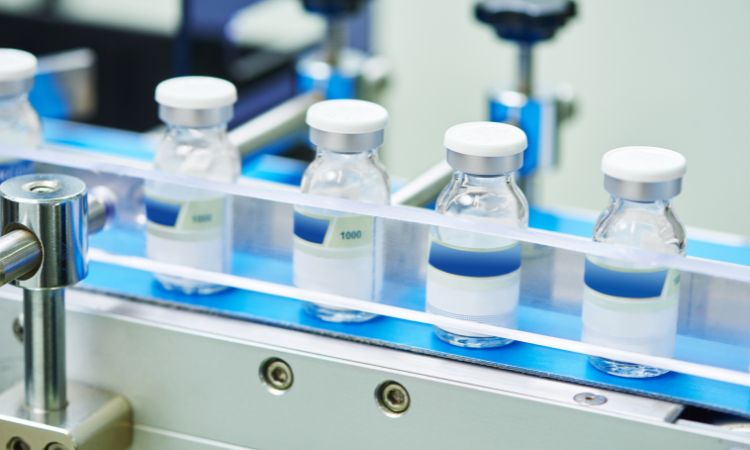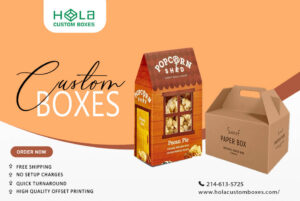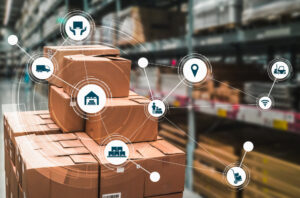The Importance of Pharmaceutical Glass Packaging in Drug Safety
- 1 The Role of Pharmaceutical Packaging
- 1.1 1. Protecting the Medication
- 1.2 2. Facilitating Proper Dosing and Administration
- 1.3 3. Enhancing Shelf Life and Stability of Drugs
- 1.4 4. Ensuring Compliance with Regulatory Standards
- 2 Glass as the Preferred Material
- 3 Safety and Integrity
- 4 Case Studies of Successful Drug Safety Ensured by Glass Packaging
- 5 Sustainability and Environmental Impact
- 5.1 Glass Recycling and Sustainability Efforts
- 5.2 Reduction of Plastic Waste in Pharmaceuticals
- 5.3 Eco-Friendly Disposal and Reusability of Glass Containers
- 6 Challenges in Pharmaceutical Glass Packaging
- 7 Innovations and Emerging Technologies in Glass Packaging
The global pharmaceutical glass packaging market size reached a value of about USD 19.60 billion in 2023. The market for pharmaceutical glass packaging is being driven by emerging economies and growing demand for glass bottles. The market is further expected to grow at a CAGR of 7% in the forecast period of 2024-2032 to reach a value of approximately USD 36.02 billion by 2032. In the ever-evolving pharmaceutical industry, ensuring the safety and integrity of drugs is paramount. One of the unsung heroes in this endeavour is pharmaceutical glass packaging. This often-overlooked component plays a critical role in safeguarding medications, protecting patients, and maintaining the efficacy of drugs.
The Role of Pharmaceutical Packaging
Pharmaceutical packaging is not just a means to an end but a crucial element in the entire pharmaceutical supply chain. Beyond the aesthetics and branding considerations, it serves multiple vital functions:
1. Protecting the Medication
Glass packaging, in particular, excels in safeguarding medications. It is a formidable barrier against external factors such as light, moisture, and oxygen. These environmental elements can degrade the potency of drugs over time, rendering them ineffective. The waterproof nature of glass makes it an ideal choice to prevent such deterioration. Additionally, glass containers are highly resistant to chemical reactions, ensuring that the drug remains unchanged within the package.
2. Facilitating Proper Dosing and Administration
Accurate dosing is critical to a patient’s well-being. Pharmaceutical glass packaging allows for precise measurement and dispensing of medications, reducing the risk of over or under-dosing. Glass vials, ampoules, and syringes provide unambiguous visibility, making it easier for healthcare professionals to administer the correct dosage.
3. Enhancing Shelf Life and Stability of Drugs
Pharmaceutical glass containers are designed to maintain drug stability and shelf life over an extended period. The inert nature of glass ensures that it does not react with the contents, preserving the drug’s efficacy. This is particularly crucial for medications that must be stored for extended periods before use.
4. Ensuring Compliance with Regulatory Standards
The pharmaceutical industry is subject to stringent regulatory standards to ensure the safety and efficacy of medications. Glass packaging is often preferred to comply with these regulations. It meets the criteria for pharmaceutical packaging set by various regulatory bodies worldwide, such as the United States Pharmacopeia (USP) and the European Pharmacopoeia (Ph. Eur).
Glass as the Preferred Material
Glass has emerged as the preferred material for pharmaceutical packaging due to its numerous advantages:
Impermeability and Inertness
Glass is impermeable to gases and liquids, preventing external contaminants from entering the package. This feature is crucial in maintaining the purity and effectiveness of pharmaceuticals. The inertness of glass ensures that it does not react with the contents, eliminating the risk of chemical interactions.
Transparency and Visibility
The transparency of the glass allows for easy inspection of the medication without the need to open the package. Healthcare professionals can visually confirm the drug’s integrity, colour, and clarity, reducing the chances of administering compromised medications.
Comparison with Other Materials
While plastic and metal are also used in pharmaceutical packaging, they may not offer the same protection and purity as glass. Plastic can be permeable to gases and susceptible to leaching, impacting drug stability. Metal containers may rust or react with certain medications. On the other hand, Glass provides a higher level of assurance in maintaining drug safety.
Safety and Integrity
Pharmaceutical glass packaging goes beyond the basics of protecting medications; it plays a pivotal role in ensuring patient safety and the integrity of the pharmaceutical supply chain.
Tamper-Evident Features of Glass Packaging
Glass packaging often incorporates tamper-evident features such as seals and breakable necks. These features provide visual cues to indicate whether the package has been tampered with, offering an additional layer of security against counterfeit drugs and unauthorized access.
Protection Against Counterfeit Drugs
Counterfeit drugs pose a significant threat to public health. Pharmaceutical glass packaging’s tamper-evident properties, combined with unique identifiers like serial numbers and barcodes, help verify the product’s authenticity. Patients can have confidence that they are receiving genuine, safe medications.
Case Studies of Successful Drug Safety Ensured by Glass Packaging
To underscore the importance of glass packaging in drug safety, let’s explore some real-world examples:
Case Study 1: Vaccine Distribution
Recently, the world has been grappling with the distribution of COVID-19 vaccines. Many of these vaccines, including those developed by Pfizer-BioNTech and Moderna, rely on glass vials for storage and distribution. The integrity of these vials is critical in ensuring that vaccines remain effective. Glass packaging, with its proven track record, played a crucial role in this global vaccination effort.
Case Study 2: Injectable Medications
Many injectable medications, such as insulin and vaccines, are stored in glass ampoules and vials. These containers protect the contents from contamination and allow for precise dosing, reducing the risk of medication errors.
These case studies highlight the indispensable role of glass packaging in ensuring the safety and efficacy of medications.
Sustainability and Environmental Impact
In an era where environmental sustainability is a top priority, pharmaceutical glass packaging aligns with eco-friendliness principles.
Glass Recycling and Sustainability Efforts
Glass is 100% recyclable without any loss of quality or purity. Recycling glass reduces the need for raw materials, conserves energy, and reduces carbon emissions. The pharmaceutical industry’s adoption of glass packaging contributes to sustainability by promoting the circular economy.
Reduction of Plastic Waste in Pharmaceuticals
The global push to reduce plastic waste extends to the pharmaceutical sector. By opting for glass packaging over plastic alternatives, pharmaceutical companies play a role in reducing plastic pollution and its associated environmental hazards.
Eco-Friendly Disposal and Reusability of Glass Containers
Glass containers are often reusable, further reducing their environmental impact. They can be returned, cleaned, sterilized, and refilled, extending their lifecycle and minimizing waste.
Challenges in Pharmaceutical Glass Packaging
Fragility and Breakage Concerns
Glass is inherently fragile and can break upon impact. This fragility necessitates careful handling during production, transportation, and storage. However, advancements in glass technology have led to the development of strengthened and tempered glass containers that are more resistant to breakage.
Cost Considerations
Glass packaging can be more expensive upfront compared to plastic alternatives. However, the long-term benefits of drug safety, stability, and sustainability often outweigh the initial cost.
Innovations and Emerging Technologies in Glass Packaging
Improved Strength and Durability
In response to fragility concerns, glass manufacturers have developed innovative solutions such as strengthened glass and coatings that enhance the durability of glass containers. These advancements reduce the risk of breakage during the manufacturing and distribution processes.
Smart Packaging Solutions
The integration of intelligent technologies into glass packaging is an emerging trend. Smart glass containers can provide real-time information about medication usage, temperature, and expiration dates. These innovations enhance patient safety and medication adherence.
Sustainable Packaging Developments
Glass packaging is evolving to meet sustainability goals. Lightweight glass containers and improved recycling processes are being explored to reduce the environmental footprint of glass packaging.

















